#miss miniver
Explore tagged Tumblr posts
Text
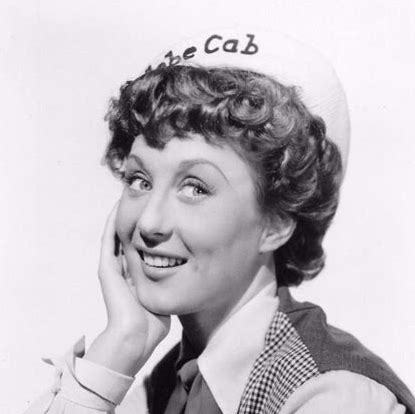

Propaganda
Betty Garrett (On The Town, Take Me Out to the Ballgame)— She’s so unhinged in On the Town and Take Me Out to the Ball Game, chasing little twink Frank Sinatra around and just casually throwing him over her shoulder. Just an icon.
Teresa Wright (The Little Foxes, Mrs. Miniver, Shadow of a Doubt)— She wrote this into her contract herself: "Miss Wright shall not be required to pose for photographs in a bathing suit unless she is in water. Neither may she be photographed running on the beach with her hair flying in the wind. Nor may she pose in any of the following situations: in shorts; playing with a cocker spaniel; digging in a garden; whipping up a meal; attired in firecrackers and holding skyrockets for the fourth of July; looking insinuatingly at the turkey for Thanksgiving; wearing a bunny cap with long ears for Easter; twinkling on prop snow in a skiing outfit while a fan blows her scarf.”
This is round 1 of the tournament. All other polls in this bracket can be found here. Please reblog with further support of your beloved hot sexy vintage woman.
[additional propaganda submitted under the cut]
Teresa Wright:
One of the best Hitchcock leading lady performances!!
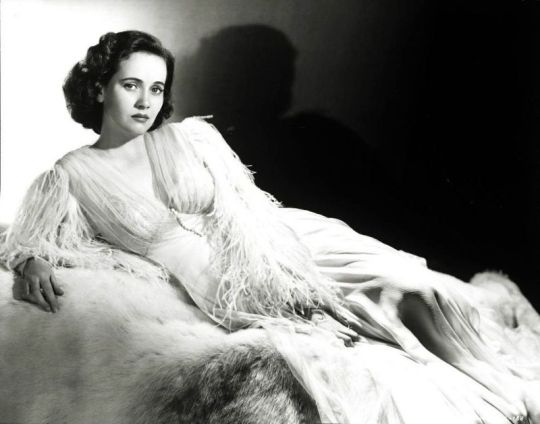
Warm, lovely, vivacious, intelligent!! imo Teresa Wright is way too underrated and deserves much more credit! I truly can’t think of another actress with the same vibe as her and she deserves more appreciation!!
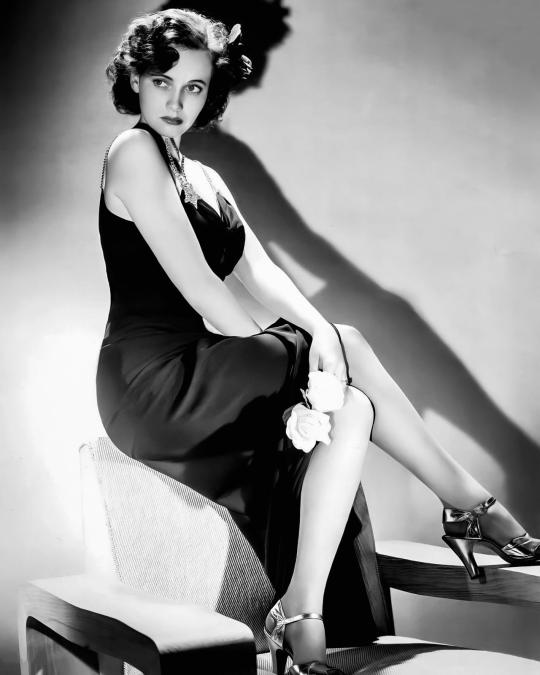
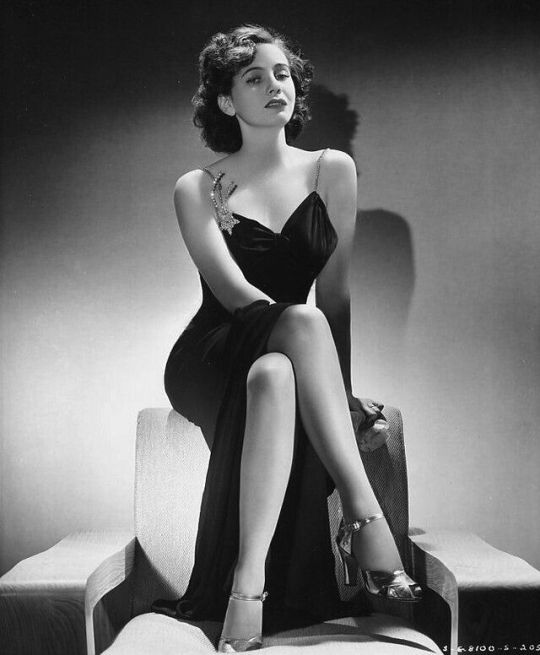
Betty Garrett:
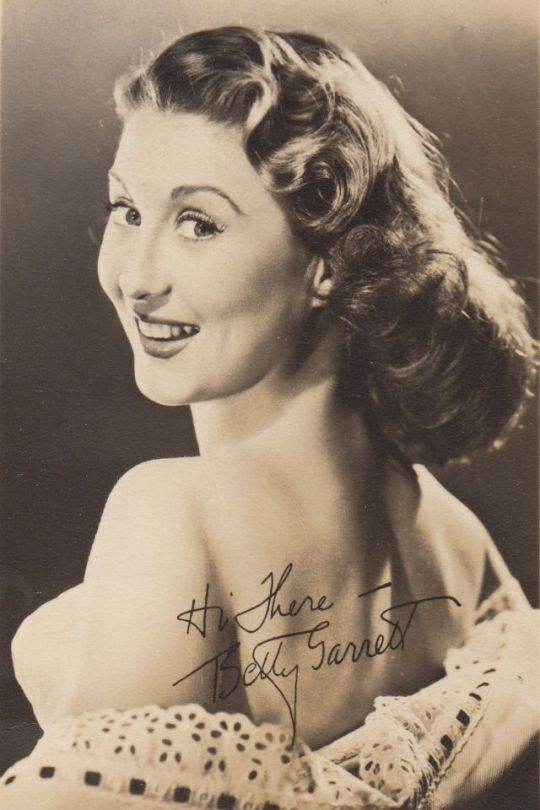
Betty Garrett "picks-up" Sinatra in Take Me Out to the Ball Game (1949)
youtube
Garrett's comments on that scene (TCM - Word of Mouth):
youtube
[editor's note: the above commentary is so delightful OP is making a rare exception to the no-post-1970-propaganda rule to enjoy discussion of Frank Sinatra being flung around like a bag of beans)
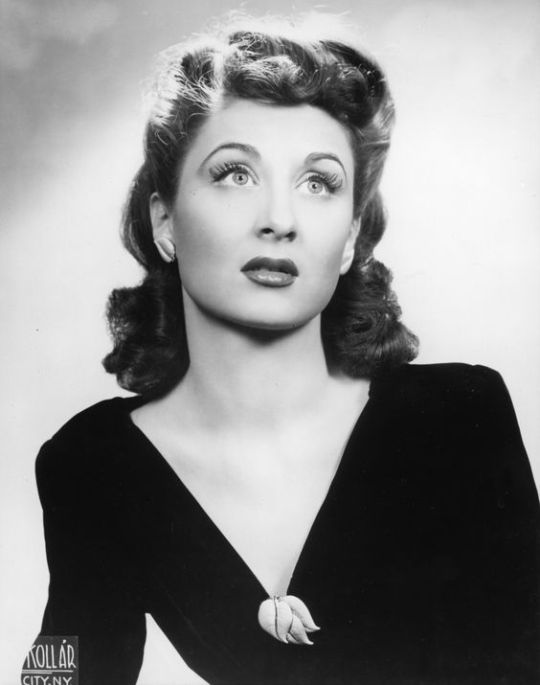
157 notes
·
View notes
Text
Miniver Cheevy, child of scorn,
Grew lean while he assailed the seasons;
He wept that he was ever born,
And he had reasons.
Miniver loved the days of old
When swords were bright and steeds were prancing;
The vision of a warrior bold
Would set him dancing.
Miniver sighed for what was not,
And dreamed, and rested from his labors;
He dreamed of Thebes and Camelot,
And Priam’s neighbors.
Miniver mourned the ripe renown
That made so many a name so fragrant;
He mourned Romance, now on the town,
And Art, a vagrant.
Miniver loved the Medici,
Albeit he had never seen one;
He would have sinned incessantly
Could he have been one.
Miniver cursed the commonplace
And eyed a khaki suit with loathing;
He missed the mediæval grace
Of iron clothing.
Miniver scorned the gold he sought,
But sore annoyed was he without it;
Miniver thought, and thought, and thought,
And thought about it.
Miniver Cheevy, born too late,
Scratched his head and kept on thinking;
Miniver coughed, and called it fate,
And kept on drinking.
— Miniver Cheevy by Edwin Arlington Robinson
5 notes
·
View notes
Text
ye olde nostalgia goggles (kiss kiss goodbye in less than one month) (a millennial looks at 34)
first off, listen to the stones' new album. it's beautiful.
as the near-last of the dying breed of glam rockers finally hang up their heels, i find myself looking back, too. i have extremely mixed feelings on idolizing an era or a hey dey (it's pretty miniver cheevy, if you ask me), wishing one was a seventies groupie, etc. probably in part because i'm now starting to see young kids idolizing the mid-2000's-- my teen years. i promise, that time period wasn't that great-- just different. it's really mildly unnerving to see that turned into some strange nostalgia bomb, and watch those that weren't around for the era pick at and latch onto microcosm aspects of it that don't encompass the whole.
let's please not bring back 2000's fashion aesthetic. that was a travesty. oh wait, you've already done it, and you shouldn't have.
i figure in terms of bands, possibly what is meant and missed in that longing for the past is the vigor and vibrancy of the tours in the earlier days, which i can understand. i would have loved to see mick jagger and billy preston dance together on tour, or ace as the absolute happiest meat that was ever stuck in the kiss orgasm sandwich, or, well, anything with that joie de vivre that only youth and newness bring to the table. but just because you can't repeat the past doesn't mean you can't enjoy the present. i'm glad for what i've been able to experience.
6 notes
·
View notes
Text
Poem of the Day 16 June 2023
Miniver Cheevy
BY EDWIN ARLINGTON ROBINSON
Miniver Cheevy, child of scorn,
Grew lean while he assailed the seasons;
He wept that he was ever born,
And he had reasons.
Miniver loved the days of old
When swords were bright and steeds were prancing;
The vision of a warrior bold
Would set him dancing.
Miniver sighed for what was not,
And dreamed, and rested from his labors;
He dreamed of Thebes and Camelot,
And Priam’s neighbors.
Miniver mourned the ripe renown
That made so many a name so fragrant;
He mourned Romance, now on the town,
And Art, a vagrant.
Miniver loved the Medici,
Albeit he had never seen one;
He would have sinned incessantly
Could he have been one.
Miniver cursed the commonplace
And eyed a khaki suit with loathing;
He missed the mediæval grace
Of iron clothing.
Miniver scorned the gold he sought,
But sore annoyed was he without it;
Miniver thought, and thought, and thought,
And thought about it.
Miniver Cheevy, born too late,
Scratched his head and kept on thinking;
Miniver coughed, and called it fate,
And kept on drinking.
2 notes
·
View notes
Text
Miniver Cheevy ( Edwin Arlington Robinson)

Miniver Cheevy, child of scorn Grew lean while he assailed the seasons; He wept that he was ever born And he had his reasons

Miniver loved the days of old When swords were bright and steed were prancing; The vision of a warrior bold Would set him dancing

Miniver sighed for what was not, And dreamed and rested from his labors; He dreamed of Thebes and Camelot, and Priams's neighbours

Miniver mourned the ripe renown, That made so many a name so fragrant; He mourned Romance, now on the town and Art, a vagrant

Miniver loved the Medici, Albeit he had never seen one; He would have sinned incessantly Could he have been one.

Miniver cursed the commonplace And eyed a khaki suit with loathing; He missed the medieval grace Of iron clothing

Miniver scorned the gold he sought But sore annoyed was he without it; Miniver thought and thought and thought And thought about it.

Miniver Cheevy, born too late; Scratched his head and kept on thinking Miniver coughed and called it fate; And kept on drinking
1 note
·
View note
Text


💿┊ BASICS ‧₊˚
ᡣ𐭩ྀིྀི ・ BIRTHNAME : monica zhang (莫妮卡张)
ᡣ𐭩ྀིྀི ・ OTHER NAMES : mei ∿ joann ∿ oluwanifemi
ᡣ𐭩ྀིྀི ・ STAGE NAME : monica (모니카)
ᡣ𐭩ྀིྀི ・ BIRTHDATE : december 11, 2000
ᡣ𐭩ྀིྀི ・ BIRTH PLACE : london, england
ᡣ𐭩ྀིྀི ・ ETHNICITY : mixed - british
ᡣ𐭩ྀིྀི ・ BLOOD TYPE : o+
ᡣ𐭩ྀིྀི ・ HEIGHT : 164.5cm (5’4”)

💿┊ LANGUAGES ‧₊˚
ᡣ𐭩ྀིྀི ・ ENGLISH : mother language 𓂃 100%
ᡣ𐭩ྀིྀི ・ YORUBA : maternal language 𓂃 95%
ᡣ𐭩ྀིྀི ・ MANDARIN : paternal language 𓂃 93%
ᡣ𐭩ྀིྀི ・ FRENCH : secondary school 𓂃 89%
ᡣ𐭩ྀིྀི ・ KOREAN : self taught / jyp lessons 𓂃 88%
ᡣ𐭩ྀིྀི ・ JAPANESE : jyp lessons 𓂃 56%

💿┊ CAREER ‧₊˚
ᡣ𐭩ྀིྀི ・ GROUP : stray kids (스트레이키즈)
ᡣ𐭩ྀིྀི ・ COMPANY : jyp entertainment
ᡣ𐭩ྀིྀི ・ TRAINING LENGTH : 1 year, 4 months & 3 weeks (from january 27, 2019 until debut)
ᡣ𐭩ྀིྀི ・ DEBUT DATE : june 17, 2020
ᡣ𐭩ྀིྀི ・ POSITIONS : main dancer ∿ sub-vocalist ∿ rapper
ᡣ𐭩ྀིྀི ・ SUB-UNIT : danceracha
ᡣ𐭩ྀིྀི ・ NAME ON BUBBLE : 니니 💕💕
ᡣ𐭩ྀིྀི ・ REP. ANIMAL : bunny
ᡣ𐭩ྀིྀི ・ SKZOO : meinii (메이니)
meinii (mei (her chinese name) + beoni (bunny in korean)) has a bunny like resemblance with black eyes and a white body. she also has a heart mark that imitates the beauty mark monica has on her cheek. she has pink highlights in her bangs and wears pink bobbles on her head. meinii is canonically leebit’s younger sister.




💿┊ CHARACTER ‧₊˚
ᡣ𐭩ྀིྀི ・ MBTI : estp-t (since 2014)
ᡣ𐭩ྀིྀི ・ TRAITS : bubbly ∿ energetic ∿ sarcastic ∿ affectionate ∿ talkative ∿ confident ∿ caring ∿ smart
ᡣ𐭩ྀིྀི ・ HABITS : zoning out ∿ huge bites or one bite ∿ saying no but doing it anyway ∿ always saying “huh” or “what” ∿ nose scrunching
ᡣ𐭩ྀིྀི ・ HOBBIES : journaling ∿ playing games ∿ drawing ∿ fashion designing ∿ baking ∿ photography ∿ eating ∿ watching saiki k
ᡣ𐭩ྀིྀི ・ LIKES : sweets ∿ fashion ∿ sanrio ∿ pink ∿ music, sleeping, mirinda strawberry ∿ melon ∿ toy aisles ∿ christmas ∿ skinship
ᡣ𐭩ྀིྀི ・ DISLIKES : vegetables ∿ spiders ∿ isolation ∿ fish ∿ horror films ∿ insects ∿ people arguing ∿ washing dishes ∿ deep waters

💿┊ TRIVIA ‧₊˚
・ she is a christian.
・ the nicknames given by the members are: moni, nini, meimei, chubs and gummy.
・ her solo fandom is called moniiacs (a play on her name and the word maniac).
・ monica was born right handed but can right neatly with her left.
・ when she was younger, she took ballet, piano and violin lessons.
・ her title’s are: swarovski princess, 4th gen it girl, miss dior and doll face.
・ she has two lobe piercings (2001 & 2017) and a nose piercing (2018).
・ she has a twin brother (he’s older by 5 hours) called malakai and a younger sister called melissa.
・ monica has a ginger korean short hair kitten called kiki; she found her in the streets in early 2024.
・ she can draw a perfect circle.

𓍼 ⊹ ˚. ᝢ TAGLIST
comment or send an ask to join !
𓍼 ⊹ ˚. ᝢ NOTES
yes i used wonyoung’s minive, yes im too iconic, im just that gal 🤷♀️ (im joking 🙏🙏)
𓍼 ⊹ ˚. ᝢ GOD LOVES YOU 💕
#͡ ❤︎ ⠻ official profile#skz 9th member#skz added member#skz addition#kpop added member#9th member of stray kids#9th member of skz#skz female addition
14 notes
·
View notes
Text
A List of How Many Oscars Best Picture Winners Have Received
Originally published February 25th, 2013
Just for kicks, I whipped this up. Boldface titles means the movie won everything it was nominated for.
The Broadway Melody, Grand Hotel, Mutiny on the Bound
Wings, All Quiet on the Western Front, You Can’t Take It with You, Rebecca, The Greatest Show on Earth
Cimarron, Cavalcade, The Great Ziegfeld, The Life of Emile Zola, Casablanca, Gentleman’s Agreement, All the King’s Men, Midnight Cowboy, The Godfather, Rocky, Crash, Argo
The Lost Weekend, Hamlet, Marty, Tom Jones, Annie Hall, Ordinary People, Chariots of Fire, Platoon, Rain Man, Driving Miss Daisy, Unforgiven, A Beautiful Mind, Million Dollar Baby, The Departed, No Country for Old Men, The King’s Speech
It Happened One Night, How Green Was My Valley, Aronud the World in Eighty Days, The Apartment, The Sound of Music, In the Heat of the Night, Oliver!, The French Connection, One Flew Over the Cuckoo’s Nest, The Deer Hunter, Kramer vs. Kramer, Terms of Endearment, The Silence of the Lambs, Braveheart, American Beauty, Gladiator, The Artist
Mrs. Miniver, All About Eve, An American in Paris, A Man for All Seasons, The Godfather: Part II, Forrest Gump, Chicago, The Hurt Locker
Going My Way, The Best Years of Our Lives, The Bridge on the River Kwai, Lawrence of Arabia, Patton, The Sting, Out of Africa, Dances with Wolves, Schindler’s List, Shakespeare in Love
Gone with the Wind, From Here to Eternity, On the Waterfront, My Fair Lady, Gandhi, Amadeus, Slumdog Millionaire
Gigi, The Last Emperor, The English Patient
West Side Story
Ben-Hur, Titanic, The Lord of the Rings: The Return of the King
0 notes
Text
Cool Cosplay: Captain America, Wonder Woman, And More!
Cool Cosplay: Captain America, Wonder Woman, And More!
Aquaman by The True Aquaman
Captain America by Kelly Mark Delcambre
Raven by KendelB, Photography by Arcane_Shutter
Tharja by Zalaria Cosplay</strong>, Photography by Nathan Tan
Gwenpool by Miss Miniver
Wonder Woman by Florencia Sofen Cosplay
Feel free to click on the models’ names to view more of their work.
View On WordPress
#aquaman#cosplay#dc comics#Florencia Sofen Cosplay#gwenpool#KendelB#marvel comics#miss miniver#raven#Tharja#the true aquaman#wonder woman#Zalaria Cosplay
1 note
·
View note
Photo

SteveTony Sketch commission for Miss Miniver on Ko-fi!
Thank you!!
832 notes
·
View notes
Text

Dana Andrews, Teresa Wright, Myrna Loy, Fredric March, Harold Russell, and Cathy O'Donnell in The Best Years of Our Lives (William Wyler, 1946)
Cast: Fredric March, Myrna Loy, Teresa Wright, Dana Andrews, Virginia Mayo, Harold Russell, Cathy O'Donnell, Hoagy Carmichael, Gladys George, Roman Bohnen, Ray Collins, Steve Cochran. Screenplay: Robert E. Sherwood, based on a novel by MacKinlay Kantor. Cinematography: Gregg Toland. Film editing: Daniel Mandell. Music: Hugo Friedhofer.
The Best Years of Our Lives is a very good movie, rich in characters and provocative incidents. It's not a great movie, but it's such a satisfying work of popular moviemaking that I'm surprised in this age of sequels and reboots, especially after the recent enthusiasm for the "Greatest Generation," no one has attempted a follow-up on the lives of its characters, taking them into the era of the Korean War, the nuclear buildup of the Soviet Union, the Cold War, McCarthyism, the civil rights struggle, and so on. Because there is something unfinished about the stories of Al, Fred, and Homer, not to mention Milly, Peggy, Marie, and Wilma, that perhaps director William Wyler and screenwriter Robert E. Sherwood couldn't possibly have foreseen in 1946. On the other hand, that's what makes The Best Years of Our Lives such a fascinating and useful document of its times. It's anything but an antiwar film -- although Homer Parrish (Harold Russell) has been mutilated, Fred Derry (Dana Andrews) suffers PTSD nightmares, and Al Stephenson (Fredric March) is well on his way to alcoholism, the film makes no effort to suggest that the war that inflicted these injuries on them was anything but just. The one naysayer, the "America Firster" who tangles with Homer and Fred in the drugstore, gets his just deserts, even if it costs Fred his job. What wins us over most is the performances: Fredric March overacts just a touch, but it won him the best actor Oscar. Harold Russell, the non-actor who received both a supporting actor Oscar and a special award, is engagingly real. And Dana Andrews proves once again that he was one of the best of the forgotten stars of the 1950s, carrying the film through from the beginning in which he seeks a ride home to the end in which he pays a nostalgic visit to the kind of plane from which he used to drop bombs. Neither Andrews nor Myrna Loy ever received an Oscar nomination, but their work in the film exhibits the kind of acting depth that makes showier award-winners look a little silly. Loy makes the most of her part as the wryly patient spouse, Teresa Wright manages to make a role somewhat handicapped by Production Code squeamishness about extramarital affairs convincing, and Virginia Mayo once again demonstrates her skill in "bad-girl" roles. Wyler was a director much celebrated by the industry, with a record-setting total of 12 nominations, including three wins: for this film, Mrs. Miniver (1942), and Ben-Hur (1959). He's not so much admired by those of us who cling to the idea that a director should provide a central consciousness in his films, being regarded as an impersonal technician. But Best Years is a deeply personal film for Wyler, who had just spent the war serving in the army air force, flying dangerous missions over Germany to make documentary films, during which he suffered serious hearing loss that threatened his postwar directing career. His experiences inform the film, especially the character of Fred Derry. In addition to the best picture Oscar and the ones for Wyler, March, and Russell, Best Years also won for Sherwood's screenplay, Daniel Mandell's film editing, and for Hugo Friedhofer's score. The last, I think, is questionable: Friedhofer seems determined to make sure we don't miss the emotional content of any scene, almost "mickey-mousing" the feelings of the characters with his music. It feels intrusive in some of the film's best moments, such as the beautifully staged reunion of Al and Milly, or the scene in which Homer, fearful that the hooks that replace his hands have destroyed his engagement to Wilma, invites her up to his room to help him get ready for bed, demonstrating the harness that holds his prostheses in place. It's a moment with an oddly erotic tension that doesn't need Friedhofer's strings to tell us what the characters are feeling.
#The Best Years of Our Lives#William Wyler#Dana Andrews#Teresa Wright#Myrna Loy#Fredric March#Harold Russell#Cathy O'Donnell
4 notes
·
View notes
Text
best picture project // THE ‘40s: WARTIME + PRESTIGE
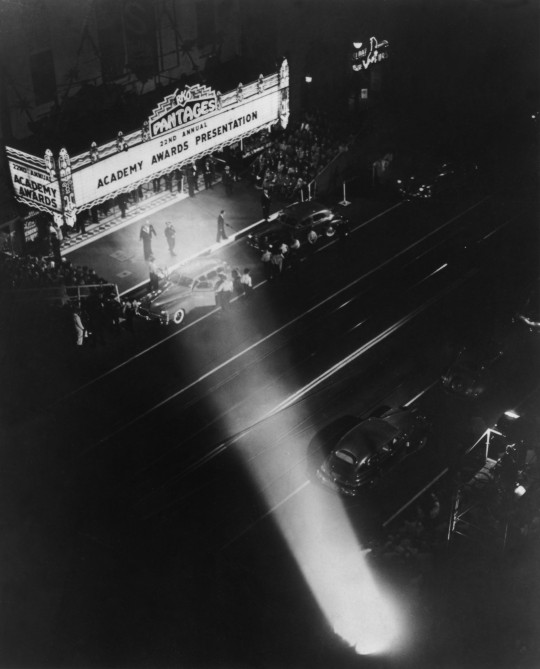
In the immortal words of Don McLean, a long, long time ago, I can still remember how I wrote about the 1930s for my Best Picture Project. (Don’t fact check those lyrics to “American Pie.”) I titled that overview of the decade “Chaos + Influence” in that order—chaos led the Academy’s way through the Great Depression. In the 1940s, though, the motion picture community embraced the organization, and in many cases, it was because they realized how helpful it could be to their own reputations and pocketbooks.
At the ceremony honoring 1940, Jimmy Stewart was the only Best Actor nominee to show up, and Katharine Hepburn said on losing for her work in The Philadelphia Story, “Prizes are nothing. My prize is my work.” By 1943, the Golden Globes launched as a copycat show, and by 1945, Joan Crawford was campaigning to win for Mildred Pierce. Henry Rogers, who ran her campaign, said, “You know as well as I do that members of the Academy vote emotionally…I’m confident that people in our business can be influenced by what they read and what they hear.” He’s on record calling acting awards “more of a popularity contest than a talent contest” with “emotional and sometimes practical considerations, none of which have to do with the quality of the performance.” Studios began taking out ads for nominees they had under contract (even if they were nominated for pictures from other studios), and formal betting began in Las Vegas on odds-on favorites.
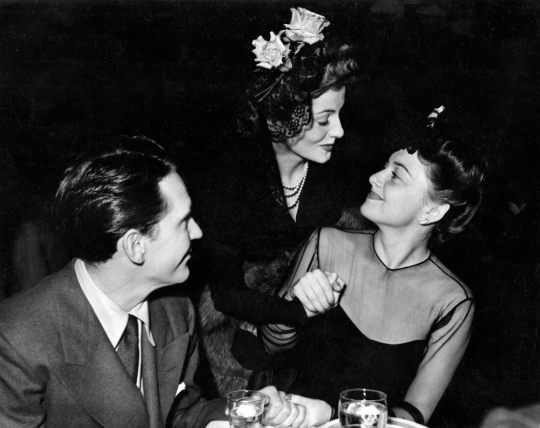
When Joan Fontaine defeated her sister Olivia de Havilland for Best Actress 1941, her salary didn’t see a change, but her studio, Selznick International, did. The fee for other studios to borrow her talents bumped from $25,000 to $100,000 after her 1940 nomination and to $200,000 after her 1941 win. Never mind that Fontaine had mixed feelings after her win. “Winning an Academy Award is undoubtedly a great accolade, supreme praise from one’s peers, a recognition to be accepted gratefully and graciously,” she said. “It can also damage irreparably one’s relations with family, friends, co-workers, the press…It was a fishbowl existence until the next year’s awards, when a new winner would occupy the throne. Naturally, there was many a doubter, many a detractor, many an ill-wisher. It’s an uneasy head that wears the crown.”
Still, success wasn’t a given for the industry during wartime, and the Oscars had to pivot like the rest of world. Statues were made of plaster for a time to prevent stealing metal from war efforts, and the 1942 ceremony was almost cancelled because of the U.S. had just jumped into World War II and Carole Lombard had just died in a plane crash while selling war bonds. But the show must go on, so the Academy pared the evening down, hosting a “dinner” instead of a “banquet” and discouraging fancy dress. The format of the show changed several times through the decade, eventually nixing the meal and moving to a theater for good. The Academy might invite soldiers for a variety-style evening, President Roosevelt might make an address, or Jack Benny might host a radio broadcast for soldiers abroad. Special awards were handed out for war-related service, including to Noel Coward for his war film In Which We Serve, the British Ministry of Information “for its vivid and dramatic presentation of the heroism of the RAF” in a documentary, and to Harold Russell “for bringing hope and courage to his fellow veterans” in The Best Years of Our Lives. (Russell also won Best Supporting Actor, making him the only person with two acting Oscars for the same film.) Also of note, Winston Churchill praised Best Picture winner Mrs. Miniver as “propaganda worth a hundred battleships,” an unusual but powerful endorsement of the voting body’s picks.
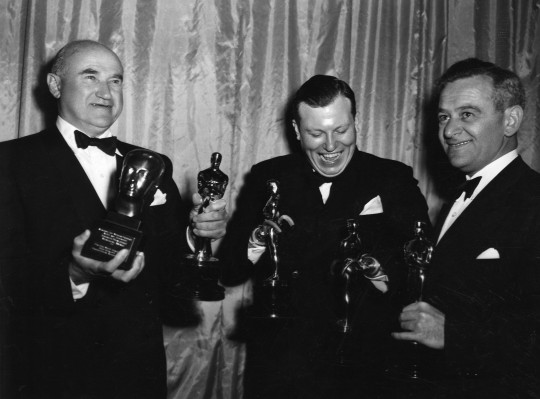
Wartime adjustments weren’t the only new features. The Academy saw more than one big first:
ABC began broadcasting the show on the radio
New categories were introduced, including for documentaries, foreign language films, and costume design
Ernst Lubitsch won the first Lifetime Achievement Oscar
The Academy started keeping winners secret until announced on stage
Barry Fitzgerald earned noms both for Best Actor and Best Supporting Actor in Going My Way—oops! A new rule was added to prevent that from happening again
Hamlet became the first non-American Best Picture win, overcoming attitudes like that of one studio exec who said noms for foreign films were “an act of treason.” (Heaven forbid we learn what that guy would think of Parasite!) The Academy had tried to prevent this with special awards for international films, but basically Laurence Olivier would not be denied (to oversimplify it)
And a few moments qualified as blink-and-you-might-miss-this-didn’t-happen-yesterday:
Fortune reported The Best Years of Our Lives and Gentleman’s Agreement made $2 million more at the box office than they would have if they had not won Best Picture
When How Green Was My Valley won Best Picture, some speculated it was due to recency bias as the last nominee to be released. Today that film is best remembered as the one that somehow won over Citizen Kane, so, um, its reputation has not aged any better
At least two winners, Michael Curtiz and Greer Garson, acknowledged they didn’t have speeches prepared. Garson’s 5½-minute speech pushed the party past 1 a.m., which Jack Black and Will Ferrell would have something to say about

Bottom line: The Academy started as a body with middling influence and transformed into a prestigious organization, not just strong enough to withstand a world war but perhaps even bolstered by it.
Photos:
1950: The Pantage Theater outside the Academy Awards honoring the films of 1949.
1942: Burgess Meredith watches Olivia de Havilland and Joan Fontaine in a happier (maybe?) moment the night Fontaine bested her sister for Best Actress. When de Havilland passed away last year, you might have seen stories about their rivalry resurface.
1947: Samuel Goldwyn, Harold Russell and William Wyler celebrate eight awards for The Best Years of Our Lives.
1942: Bob Hope hosts for his third time. He hosted or co-hosted the event 19 times between 1940 and 1978.
Resources:
Behind the Oscar: The Secret History of the Academy Awards by Anthony Holden (1993)
Oscars.org (including all photos)
“Oscar Hosts: Performers Who Have Hosted the Academy Awards,” GoldDerby.com (2020)
#1940s#Best Picture Project#Best Picture#Academy Awards#Oscars#Hollywood#Old Hollywood#Golden Age of Hollywood#World War II#Joan Fontaine#Olivia de Havilland#Jimmy Stewart#The Philadelphia Story#Katharine Hepburn#Joan Crawford#Mildred Pierce#To Each His Own#The Best Years of Our Lives#Harold Russell#Gentleman's Agreement#Carole Lombard#In Which We Serve#Noel Coward#Barry Fitzgerald#Going My Way#Jack Benny#Franklin D. Roosevelt#Mrs. Miniver#Bob Hope#William Wyler
16 notes
·
View notes
Text
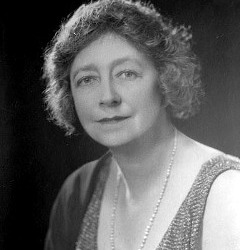

Propaganda
May Whitty (The Lady Vanishes, Gaslight, Bill of Divorcement, Suspicion, Mrs Miniver)—Wonderful character actress who light up every film she's in. First actress to be invested as a Dame in 1918 started her career on stage with Sir Henry Irving, [editor's note: the propaganda abruptly cuts off post-comma. The propaganda vanishes]
Martita Hunt (Great Expectations, Anastasia)—The original Miss Havisham - hot mad old lady for the win!
This is round 1 of the tournament. All other polls in this bracket can be found here. Please reblog with further support of your beloved hot sexy vintage woman.
[additional propaganda submitted under the cut.]
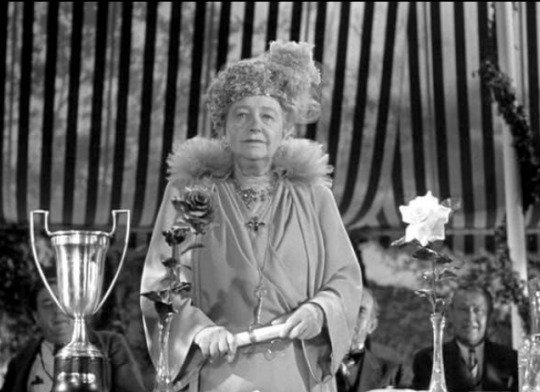
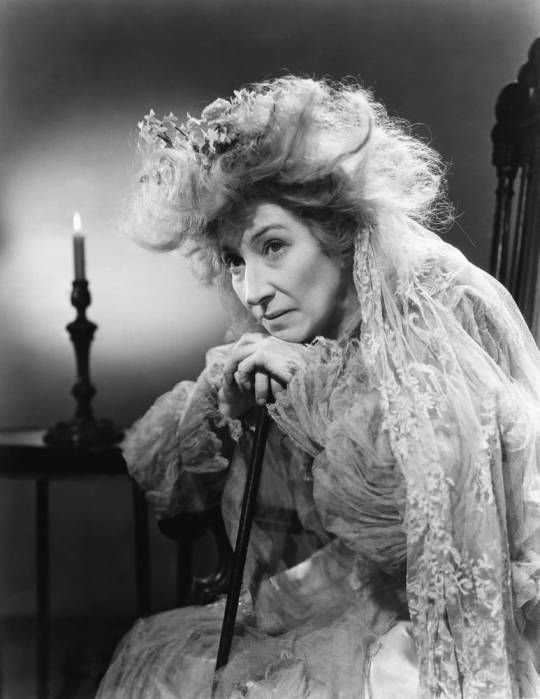
107 notes
·
View notes
Note
So I was reading about the first Oscars ceremony, and it had a division between Outstanding Picture and Best Unique & Artistic Film, where Unique & Artistic was apparently meant to be an equal to Outstanding Picture but dedicated more for prestige artistic works. The next year, the two categories became one from then on, and Outstanding Picture was the only top prize. (If any of that is wrong, blame wikipedia.)
If the split had remained, and there was a more commercial-y movie top prize and a prestige art top prize, what are some notable movies that suddenly pick up wins?
okay wait........ this is a brilliant question and i am ashamed to say i’ve never really given it much thought until now.
idk if you’ve seen wings and sunrise but they’re both pretty great and they do represent wildly different kinds of filmmaking. while it’s safe to say Wings is the more commercial film, it has great craftsmanship behind it and it very clearly created the template for accessible, capital-i Important, and well-made best picture winners to come.
and, full transparency, sunrise is one of my, like, top 15 favorite movies, so i’m hella biased, but that movie is a gorgeous and strange and thrilling piece of work. the title “unique and artistic film” is impossibly vague, but watching sunrise makes it very, very clear that it fits that bill for that category. and while we’ll, of course, never know what might have happened if that category had continued, it’s tempting to think that all the winners in unique and artistic film would be of sunrise’s calibre, but knowing the oscars... that’s clearly a fantasy, lol. while sunrise is a wildly inventive and artistic film, it’s important to remember that it was fully on the academy’s radar -- janet gaynor won best actress in part for her performance in the film, and it also won best cinematography. so while it’s tempting to think the academy would always recognize a truly unique and artistic achievement every year, in all likelihood, they probably wouldn’t stray too far from the movies that were already on their radar.
so for this thought experiment!!
it’s probably safe to assume every best picture winner has to go in one of the two categories. there are only a handful of winners that stick out as maybe missing out on the big win in this new system, but only a handful.
so uh. this is way more than you asked but i got hooked. here’s what i think might have happened if the two best picture categories had stuck around. as i was working through the years, it became clear to me that, unfortunately, in a lot of years, the unique and artistic film would likely end up going to the more overtly “prestigious” films, such as the song of bernadette or the life of emile zola, while their far better and more commercially viable rivals (casablanca for bernadette, the awful truth for zola) would win outstanding picture. the actual best picture winners have an asterisk next to them. what’s also interesting to consider is the importance of the best director category: most of the time, a split in picture and director will tell you what’s clearly the runner-up. those years, usually, give you a good sense of how the two awards would shake out.
Outstanding Picture / Unique and Artistic Film
1929: The Broadway Melody*; The Divine Lady
1930: The Big House; All Quiet on the Western Front*
1931: Cimarron*; Morocco
1932: Grand Hotel*; Bad Girl
1933: Little Women; Cavalcade*
1934: It Happened One Night*; One Night of Love
1935: The Informer; A Midsummer Night’s Dream (** this is one of the few years i think the actual BP winner, Mutiny on the Bounty, would miss out; The Informer was clearly the runner-up for BP with wins in director, actor, and screenplay, while Midsummer was seen as THE artistic triumph of the year, and with its historic write-in cinematography win, there was clearly a lot of passion for it)
1936: Mr. Deeds Goes to Town; The Great Ziegfeld*
1937: The Awful Truth; The Life of Emile Zola*
1938: You Can’t Take It With You*; Snow White and the Seven Dwarfs or Grand Illusion (** this one’s tough... Grand Illusion made history as the first non-english movie nominated for BP, and it clearly had a lot of support, but Snow White was such a monumental moment in Hollywood, and the academy clearly acknowledged that with its honorary award)
1939: Gone with the Wind*; The Wizard of Oz (** this is one of the first years with a clear runaway favorite for best picture, which makes guessing the way the other award would go very difficult! i’m leaning towards Oz purely because of its technical achievements, but i’m not confident about that choice at all.)
1940: Rebecca*; The Grapes of Wrath
1941: How Green Was My Valley*; Citizen Kane
1942: Yankee Doodle Dandy; Mrs. Miniver*
1943: Casablanca*; The Song of Bernadette
1944: Going My Way*; Wilson
1945: The Bells of St. Mary’s; The Lost Weekend*
1946: The Best Years of Our Lives*; Henry V
1947: Gentleman’s Agreement*; A Double Life
1948: The Treasure of the Sierra Madre; Hamlet*
1949: All the King’s Men*; The Heiress
1950: All About Eve*; Sunset Boulevard
1951: A Place in the Sun; An American in Paris*
1952: The Greatest Show on Earth*; The Quiet Man
1953: Roman Holiday; From Here to Eternity*
1954: The Country Girl; On the Waterfront*
1955: Marty*; Picnic
1956: Around the World in 80 Days*; Giant
1957: Peyton Place; The Bridge on the River Kwai
1958: The Defiant Ones; Gigi*
1959: The Diary of Anne Frank; Ben-Hur*
1960: Elmer Gantry; The Apartment*
1961: West Side Story*; Judgment at Nuremberg
1962: To Kill a Mockingbird; Lawrence of Arabia*
1963: Tom Jones*; 8½
1964: Mary Poppins; My Fair Lady*
1965: The Sound of Music*; Doctor Zhivago
1966: A Man for All Seasons*; Who’s Afraid of Virginia Woolf?
1967: In the Heat of the Night*; The Graduate
1968: Oliver!*; 2001: A Space Odyssey
1969: Midnight Cowboy; Z
1970: Airport; Patton*
1971: The French Connection*; The Last Picture Show
1972: The Godfather; Cabaret
1973: The Sting*; The Exorcist
1974: Chinatown; The Godfather, Part II
1975: Jaws; One Flew Over the Cuckoo’s Nest*
1976: Rocky*; Network
1977: Star Wars; Annie Hall*
1978: Coming Home; The Deer Hunter*
1979: Kramer vs. Kramer*; All That Jazz
1980: Ordinary People*; Raging Bull
1981: Chariots of Fire*; Reds
1982: E.T. the Extra-Terrestrial; Gandhi*
1983: Terms of Endearment*; Fanny and Alexander
1984: Amadeus*; The Killing Fields
1985: Out of Africa*; Ran
1986: Platoon*; Blue Velvet
1987: Moonstruck; The Last Emperor*
1988: Rain Man*; Who Framed Roger Rabbit
1989: Driving Miss Daisy*; Born on the Fourth of July
1990: Ghost; Dances with Wolves*
1991: The Silence of the Lambs*; JFK
1992: Unforgiven*; Howards End
1993: Schindler’s List*; The Piano
1994: Forrest Gump*; Three Colors: Red
1995: Braveheart*; Toy Story
1996: Jerry Maguire; The English Patient*
1997: Titanic*; L.A. Confidential
1998: Shakespeare in Love*; Saving Private Ryan
1999: The Cider House Rules; American Beauty*
2000: Traffic; Crouching Tiger, Hidden Dragon (** this is another year where i think the actual BP winner, Gladiator, might have missed out. it was a tight three-way race going into oscar night, and if there were two BP awards, i think this consensus might have settled, leaving Gladiator to go home with just actor and some tech awards.)
2001: A Beautiful Mind*; Mulholland Drive
2002: Chicago*; The Pianist
2003: Mystic River; The Lord of the Rings: The Return of the King*
2004: Million Dollar Baby*; The Aviator
2005: Crash*; Brokeback Mountain
2006: The Departed*; Babel
2007: No Country for Old Men*; The Diving Bell and the Butterfly
2008: The Dark Knight; Slumdog Millionaire*
2009: The Hurt Locker*; Avatar
2010: The King’s Speech*; The Social Network
2011: The Artist*; The Tree of Life
2012: Argo*; Life of Pi
2013: 12 Years a Slave*; Gravity
2014: Birdman*; Boyhood
2015: Spotlight*; The Revenant
2016: La La Land; Moonlight*
2017: Three Billboards Outside Ebbing, Missouri; The Shape of Water*
2018: Black Panther; Roma (** again, i think Green Book gets bumped out in this scenario, i think Black Panther is precisely the kind of movie that benefits from an award that’s seemingly more ~populist~ while Roma easily snags the unique & artistic prize)
2019: 1917; Parasite*
2020: The Father; Nomadland*
but of course i have no idea at all, and most of these are just my gut reactions lol. what a fun question!
23 notes
·
View notes
Text
“The evidence relating to Elizabeth of York’s wardrobe is meagre. In a later copy of a half-length portrait by an unknown artist dating from c. 1500-1503 she is shown wearing a crimson gown, probably made of velvet, with a fitted bodice with a square neck and long fitted sleeves with fur cuffs. With this she wore the English gable dress. Charles I’s picture inventory listed a now missing portrait of her ‘in a black dressing adorn’d with gould and pearls in a goulden habbitt with white ermin’. Her portrait was also included in the dynastic image that Holbein created for the privy chamber at Whitehall. The general appearance of the painting is known from a seventeeth-century reproduction by Remigius van Leemput (1607-75). The picture provides a full-length image of Elizabeth in a gown of tawny cloth of gold with a deep border of miniver around the hem, tight-fitting sleeves with turned-back cuffs of the same fur. The bodice is tight-fitting with a square neckline, and it is also trimmed with miniver and partially in-filled with a line partlet. On her head she is wearing an English gable headdress with long lappets hanging down her shoulders, and the main, black velvet section of the hood hanging down her back. She was also depicted in the transept window of Great Malvern priory church and the royal window at Canterbury. The gilt bronze effigy on her tomb cast by Torrigiano shows her in a simplified form of the gown and gable headdress.”
— Maria Hayward, Dress at the Court of Henry VIII
55 notes
·
View notes
Text
Quarantine Bookshelf
I saw @bookcub do this, and it looked like fun. I have two main sets of bookshelves, so I’m doing this for each. LV = Living Room, BR = Bedroom.
1. If you go top-to-bottom, left-to-right, what is the very first book on the top shelf?
BR: Landline by Rainbow Rowell
LV: The Little Women Treasury by Carolyn Strom Collins, Christina Wyss Eriksson
2. Did you buy it yourself or was it a gift?
BR: It was a gift selected from my wishlist.
LV: I bought it at a library book sale (I miss these so much in our current situation).
3. Now, take the book that’s fifth from the right on the second shelf. What book is it?
BR: The Blue Sword by Robin McKinley
LV: Out of the Easy by Ruta Sepetys
4. What’s the first complete sentence on page 100?
BR: “She also learned to vault into the saddle, and Sungold no longer put his ears back when she did it.”
LV: "Willie would be steaming.”
5. On the last shelf, choose a book at random that’s close to the middle. Flip to pages 50-51. What’s the first line of dialogue to catch your eye and who says it?
BR: El-Deafo by Cece Bell: “Let’s build a snowman!” - Laura
LV: A Proud Taste for Scarlett and Miniver by E.L. Konigsburg: “I think that carpets would do a lot for French floors and French feet.” - Eleanor of Aquitaine (This is from page 52 as there was no dialogue on pages 50 or 51.)
6. Describe the character in 3 words.
BR: Laura is a pushy, over-bearing friend.
LV: Eleanor is regal, elegant, and quick-witted.
7. Middle shelf - what’s your favorite book there?
BR: In Other Lands and My Lady Jane
LV: Anne of Green Gables and Possession
8. Top shelf - who’s your literary crush?
BR: Cadvan from the Books of Pellinor.
LV: Theodore Laurence from Little Women.
9. If you go top-to-bottom, left-to-right what is the very last book on the bottom shelf?
BR: A Golden Guide to North American Birds.
LV: The Peabody Sisters.
10. Have you read it? Did you enjoy it? If you haven’t, why not?
BR: No, I collect Golden Guides. The illustrations are lovely.
LV: Yes, It’s one of my all-time favorite
9 notes
·
View notes
Quote
Miniver cursed the commonplace And eyed a khaki suit with loathing; He missed the mediæval grace Of iron clothing.
Edwin Arlington Robinson
17 notes
·
View notes